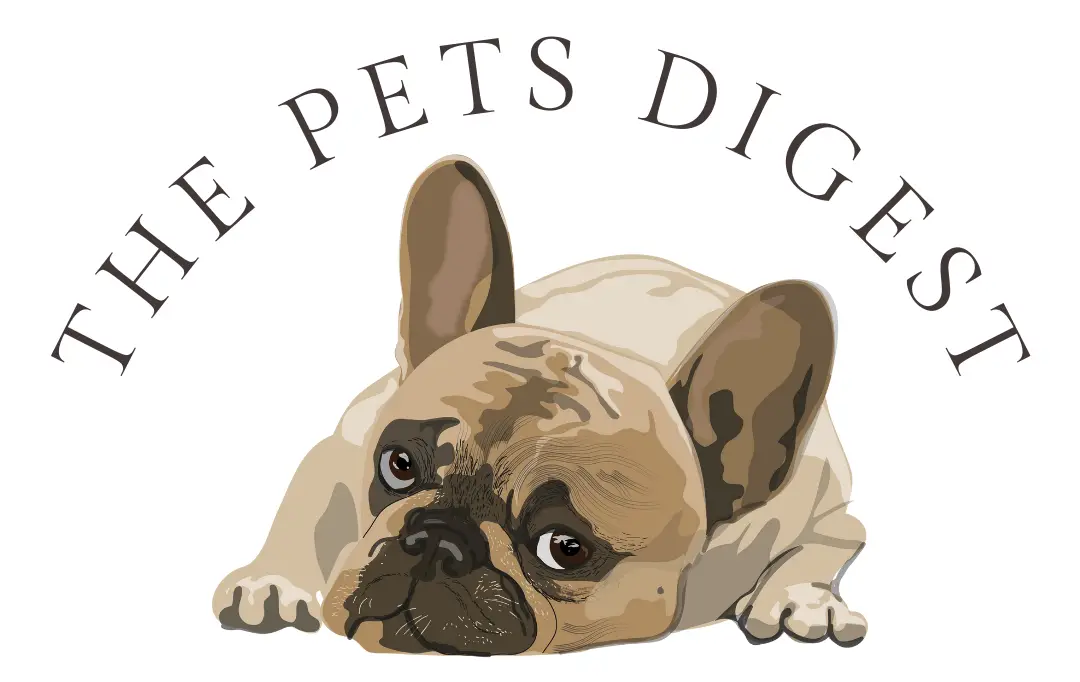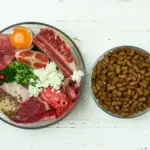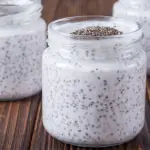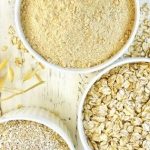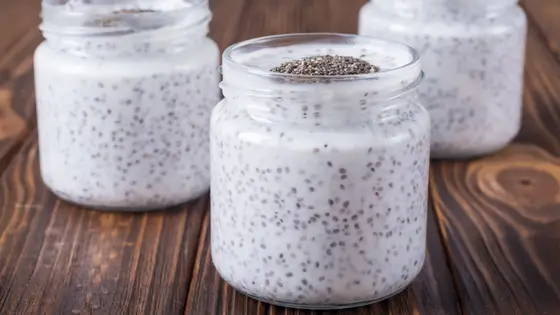These are the top three things to look for when choosing dog food for your pup that is highly beneficial and of great quality. If you want to read a little further into how to choose a great kibble or dry food for your dog, read this article.
Let’s first look at what the four main types of dog food available commercially in most stores.
What are the different types of dog food?
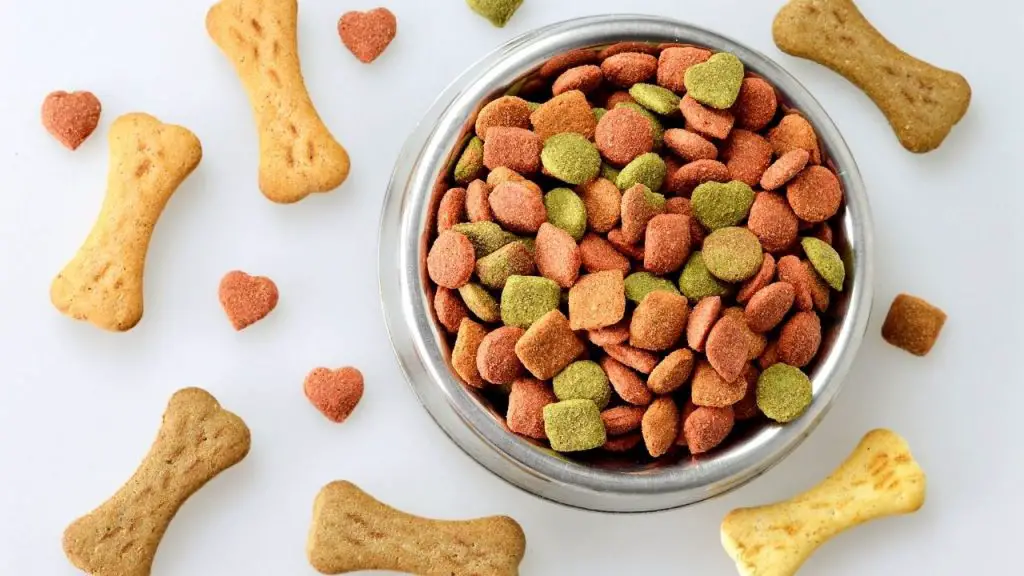
Dog food generally falls into one of two categories: dry or canned and these can further be broken down into dry-expanded, semi-moist, or soft-expanded depending on the moisture content.
- Dry-expanded dog food usually contains 10-12 percent final moisture content and is formulated using cereal grains, cereal grain by-products, animal by-products, fats and oils, minerals, and vitamins in most cases. Most dry dog food goes through an extrusion process, which is when heat and pressure are used to make kibble. One issue with the extrusion process is the creation of starch-lipid complexes. Spot & Tango is a good example of a healthy dry dog food, Wild Earth is another.
- Semi-moist dogfoods usually have an intermediate moisture level of 25-35% and these products are cooked through an extrusion process similar to the one for dry-expanded dog foods. They usually contain meat or meat by-products slurries. The cons that often come with semi-moist dog food is that they usually contain a lot of sugar and other flavor additives, so make sure you carefully check the labels
- Soft-expanded (soft dry) dog foods usually have a moisture range of 27-32% and are mixed with dry-expanded and semi-moist foods.
- Canned dog foods usually contain between 74-78% moisture and often contain much higher levels of fresh or frozen meat, poultry, or fish products, and animal by-products. Ollie is a great band for wet dog food.
What to look for when choosing a commercial dog food
1. Human-grade meats
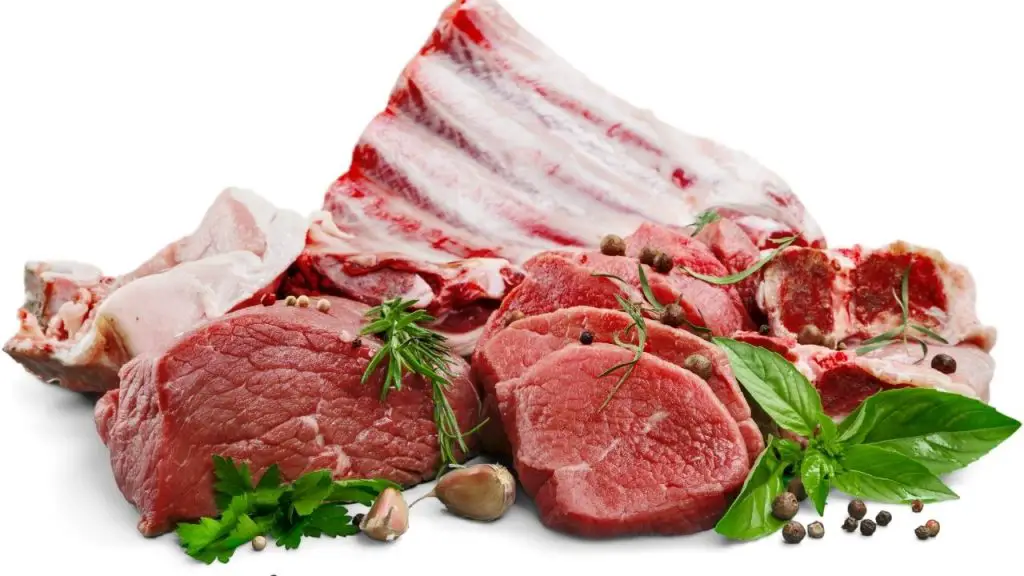
One of the first things you will usually notice in a quality dog food is ‘human grade’ or USDA inspected meat (meat that is fit for human consumption). If you can buy dog food made from organic human-grade meat that would be the best since these meats come from animals raised without antibiotics, growth hormones, or steroids.
If the meat used is not USDA or human-grade it could have come from diseased or decaying animals and are usually labeled on the bag as ‘meat meal’ or ‘meat and bone meal’.
2. Natural preservatives
Look for a food that uses natural preservatives like vitamin E and vitamin C which are most commonly used.
Make sure to check the label to determine if natural preservatives were used or if unnatural ones like BHA (butylated hydroxyanisole) or BHT (butylated hydroxytoluene) which have both been linked to various forms of cancer.
One chemical antioxidant commonly used is ethoxyquin which is a chemical used in making rubber and preserving animal feed, it is banned for human consumption.

3. Freshness
Look for a brand with a maximum shelf life of six months and a bag of food that is under three months old if you are feeding dry kibble. If you have a smaller dog like a Yorkie or Chihuahua, you may want to purchase a smaller bag since by the time they reach the end of a large bag the food may be stale.
If the shelf life of a bag of dog food is 6 months or less you can be fairly certain that the meat used was digested naturally and not chemically, which is important to know for your dog’s health.
Try to buy enough to last a maximum of a month and store it in a dark, dry place in an air-tight container. If you want to know more about properly storing your dog’s food, read our latest article here.
References
Earl Mindell’s Nutrition and Health for Dogs
